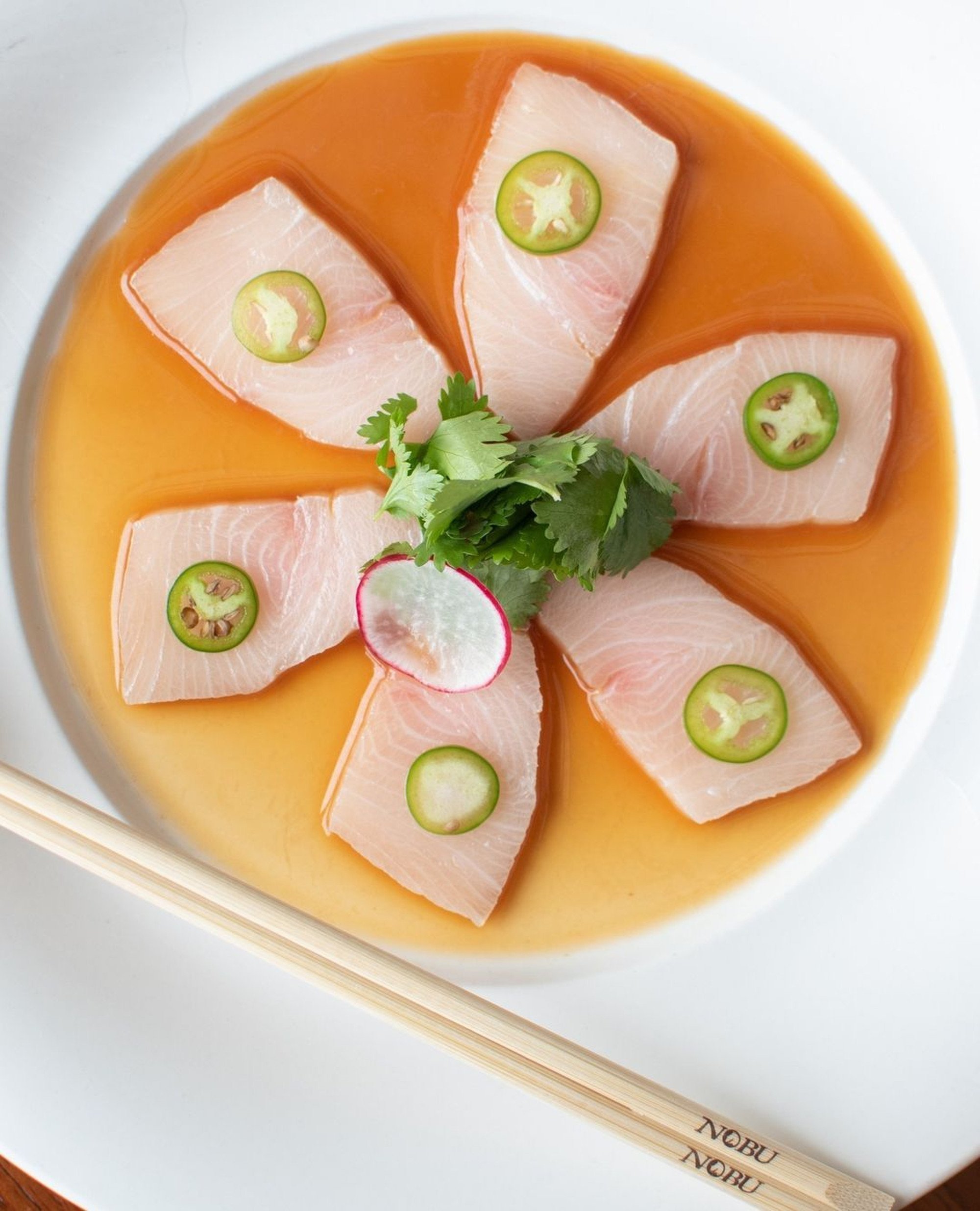
Nobu at the Regent Hong Kong hotel: what to expect from the reopening of the Japanese-Peruvian fine-dining restaurant
- Chef Nobuyuki ‘Nobu’ Matsuhisa talks about expanding the menu, retaining popular classics and using local ingredients ahead of the November 8 official reopening
- Little has changed about the restaurant itself save for some cosmetic facelifts, including a retouched ceiling and updated light fixtures
Known worldwide for its blending of Peruvian and Japanese cuisines, Nobu has reopened its doors in Hong Kong after a three-year hiatus.
The restaurant closed in 2020 as part of the huge refurbishment project that would eventually turn its home, the InterContinental Hong Kong, into the Regent.
“We were informed of the upcoming renovations, but we had no control over the timing,” explains 74-year-old chef Nobuyuki Matsuhisa, known simply as Nobu, whose name the restaurant bears.
The restaurant’s relaunch coincides with the hotel’s official grand opening party, on November 8.

Little has changed about the restaurant itself save for some cosmetic facelifts, including a retouched ceiling and updated light fixtures. Diners who have missed the restaurant’s contemporary take on Japanese cuisine with South American flair can also rest assured that Nobu’s most popular classics remain on the menu.
These include the famous yellowtail jalapeño, where sashimi-grade fish swims in a shallow sauce of soy and yuzu – a simple dish but full of flavour. The heat of the jalapeño substitutes the burn usually brought on by wasabi.

The dish has a great origin story too. It is said that chef Nobu put the hamachi and jalapeño combination together one night for his staff when there was a lot of the fish left over from an event, as well as plenty of jalapeño. This impromptu dish was such a hit it ended up becoming a signature item on the menu.
Another classic, the “new-style salmon sashimi”, also remains on the menu.
“When I first served sushi in Los Angeles 30 years ago, a lot of people liked their fish cooked, not raw,” Nobu says of the dish’s origins.
“I once had a customer send back a sashimi dish because she wouldn’t eat raw fish. I wanted to find some way to salvage the dish, so I grabbed the hot oil that was sitting on the stove and poured it over the fish, searing it in contrast.
“The customer was hesitant when I asked her to try it, but she ate every bite and this was how ‘new-style sashimi’ was born.”
He says he has plans to expand the menu. “This is my job. I’m always travelling to another kitchen [in the group], talking to the chefs, trying to make something new.”

Asked if he would be working with local ingredients, Nobu says that has been part of the brand all along.
“Yes, that is Nobu’s concept, to work with as many local ingredients and products as possible.”
The last three years have seen a range of new local products and ingredients in Hong Kong, such as Ping Yuen chicken and Yi O rice, which would give the chef more choices than before.
Apart from the dozens of restaurants under his name, Nobu has also 18 hotels under his brand and recently added sneaker designer to his resume.
Earlier this year, he collaborated with Chris Stamp of streetwear label Stampd for a special edition of the iconic Nike “Triple White” Air Force 1.
Dubbed the Sushi Force 1, the shoe has a “Beverly Hills Sushi Club” logo on the heels and tongue tags, and “SF-1”, “Stampd” and “Matsuhisa” printed on the shoelaces.
“Chris is a friend of mine,” Nobu explains. “He asked if we can work together and Sushi Force was his idea.”
He says he is keeping an open mind regarding taking part in other collaborations.
“Any new venture we take to the partners meeting and we decide together, yes or no, so we move forward in unison,” he says.
“I like to take things step by step. If it’s a good idea, we can always start negotiations.”

